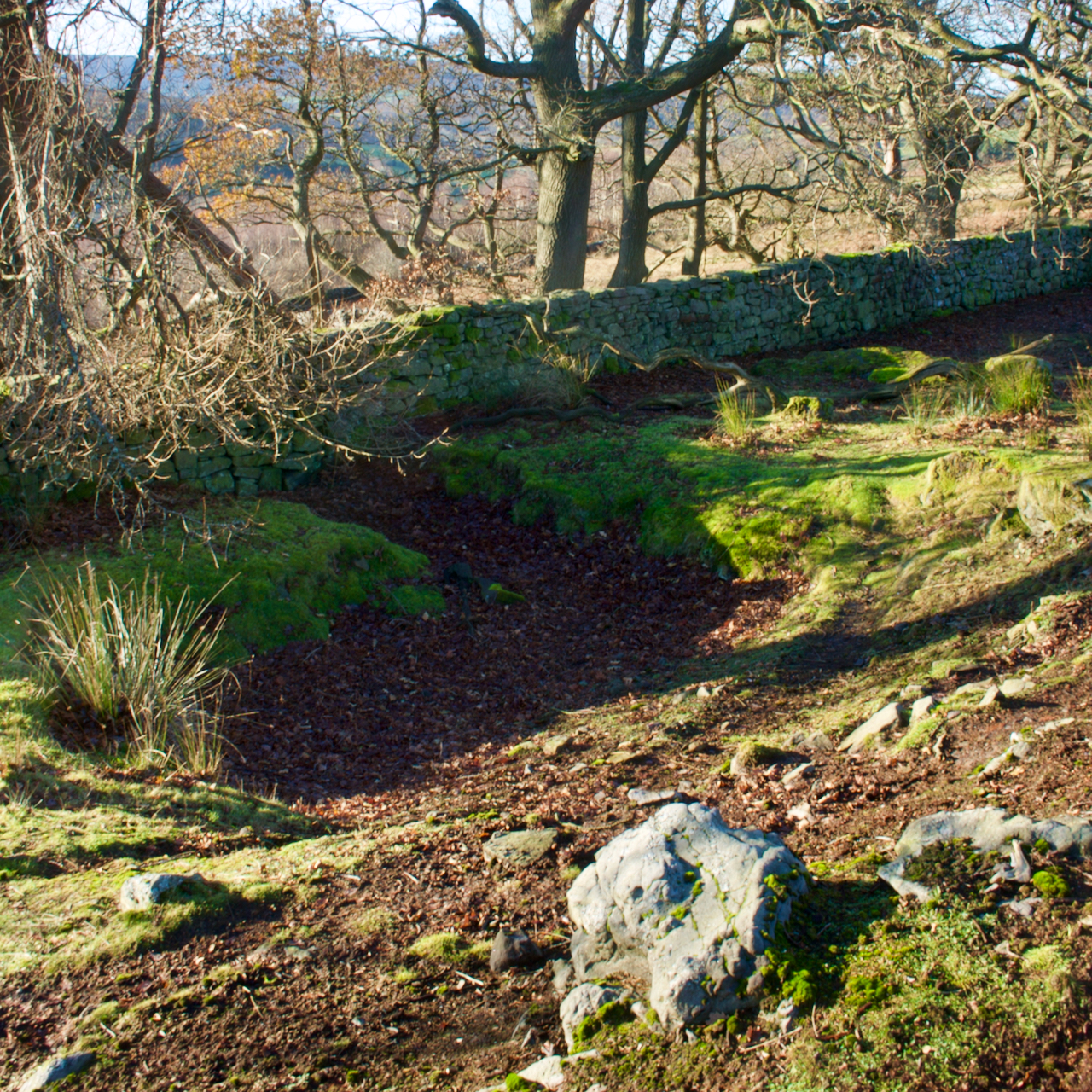A few weeks ago I had a tip off about a WW2 ‘Auxiliary Unit‘ operations base above Danby Park overlooking Castleton (thanks, Chris). This would have been the hideout for a special detachment of the Home Guard which would have operated as a guerrilla force in the event of a German invasion1The Pillbox Study Group. (2013). Auxiliary Units | The Pillbox Study Group Website. [online] Available at: http://www.pillbox-study-group.org.uk/other-wwii-defensive-structures/auxiliary-units/ [Accessed 15 Dec. 2021].2North York Moors National Park. (2012). HER Map: North York Moors National Park. HER No: 6304/5. [online] Available at: https://www.northyorkmoors.org.uk/discover/archaeology/her-map [Accessed 15 Dec. 2021]..
Although these were ostensibly volunteers and wore Home Guard uniforms during training they were not the characters portrayed in Dad’s Army. Their aim was to hinder the German progress inland if an invasion had occurred at Whitby, targeting roads and railway lines. They would have understood that if such an invasion took place, their projected life expectancy was just twelve days, and were under orders to either kill themselves or shoot one another if under threat of imminent capture.
This type of guerrilla warfare was at the time referred to as ‘scallywagging’, hence members of these Auxiliary Units were known as ‘scallywags’.
I found the remote observation post first, a 3 by 3 by 5′ deep, stone lined pit, its location given away in the featured photo by some bits of (asbestos?) corrugated sheeting. This would certainly give a panoramic view over the Esk Valley.
About 100 metres away, near the fallen Scots Pine tree in the featured photo above, is the remains of the actual operations base in which the soldiers would have hidden themselves away. It has been measured as 14′ 9″ by 16′ 6″ and would have been roofed with corrugated sheeting, and suitably camouflaged.

Recruitment for the unit was from local workers, gamekeepers, and no doubt some of the former were poachers. Their activities were a closely guarded secret, even from their families. Their names are recorded 3Staybehinds.com. (2021). Castleton Patrol | British Resistance Archive (staybehinds.com). [online] Available at: https://www.staybehinds.com/patrol/castleton-patrol [Accessed 15 Dec. 2021].:—
-
- Sergeant George Frederick Shaw — Farmer and stone mason
- Corporal Crispin Foster Wilson Helm — Agricultural estate mason
- Private Robert Arthur Fishpool — Joiner & woodworker
- Private Fred Flintoff — Cowman
- Private John Elliott Pearson — Permanent way labourer
- Private Joseph Henderson Quigley — Farm labourer
- Private Leslie Snaith — Shoeing general smith
Amazing a photo exists of the Castleton Patrol posing in 2 seater Austin (from S Lewins).
- 1The Pillbox Study Group. (2013). Auxiliary Units | The Pillbox Study Group Website. [online] Available at: http://www.pillbox-study-group.org.uk/other-wwii-defensive-structures/auxiliary-units/ [Accessed 15 Dec. 2021].
- 2North York Moors National Park. (2012). HER Map: North York Moors National Park. HER No: 6304/5. [online] Available at: https://www.northyorkmoors.org.uk/discover/archaeology/her-map [Accessed 15 Dec. 2021].
- 3Staybehinds.com. (2021). Castleton Patrol | British Resistance Archive (staybehinds.com). [online] Available at: https://www.staybehinds.com/patrol/castleton-patrol [Accessed 15 Dec. 2021].


Leave a Reply